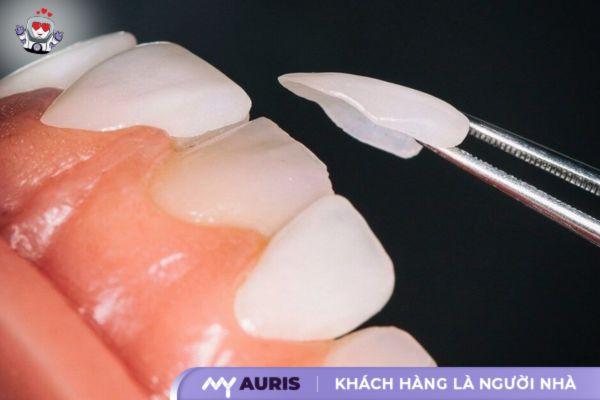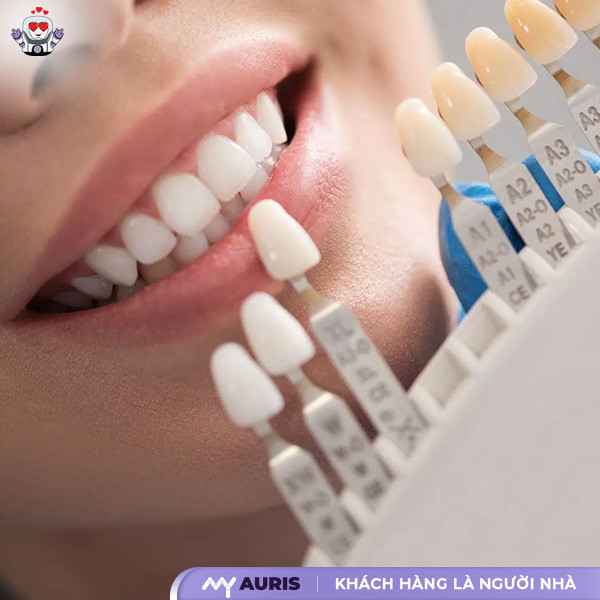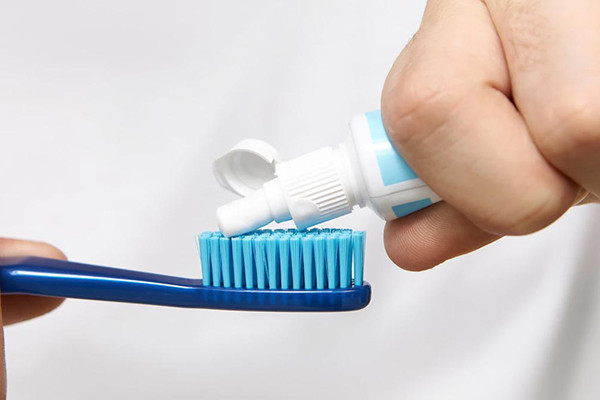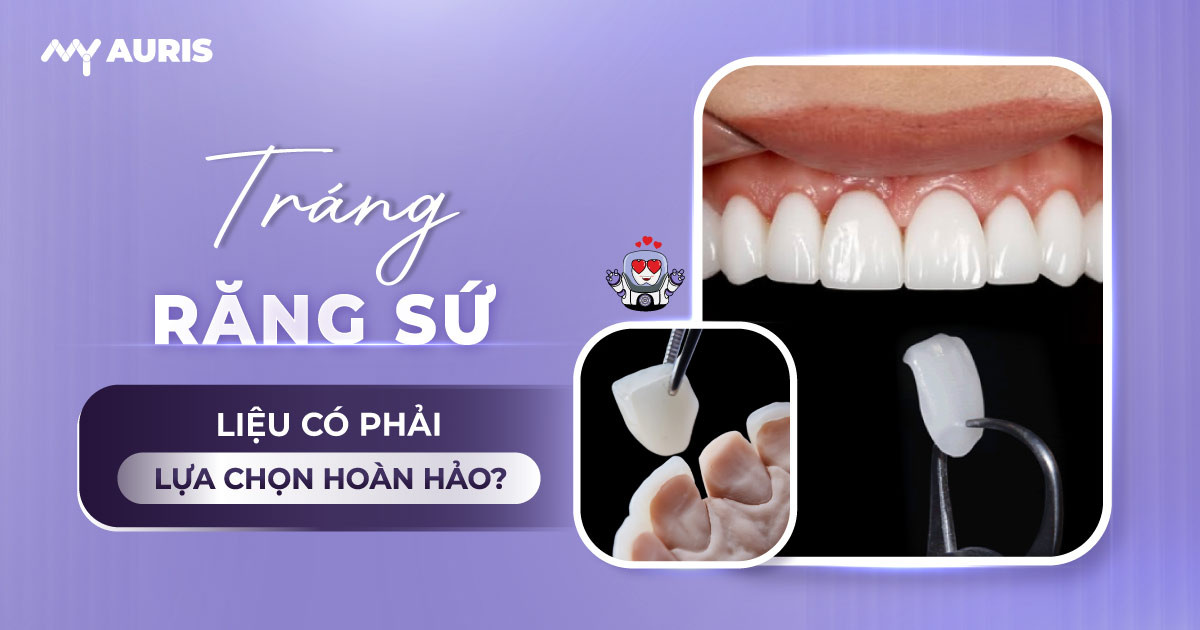In modern society, the demand for beauty is increasingly emphasized, leading to the strong development of dental aesthetic trends. Among them, porcelain enamel veneering (also referred to as porcelain coating or veneers) stands out as a leading solution, bringing natural and lasting beauty to smiles. This article by My Auris will provide detailed information about the porcelain enamel veneering method, helping you better understand the process, advantages, and things to note when choosing this service.
What is Porcelain Enamel Veneering?
Porcelain enamel veneering, also known as porcelain coating or covering, is an advanced dental technique that significantly improves the appearance of a smile. This technique requires the performing dentist to have high expertise, extensive experience, and solid skills to ensure optimal aesthetic results and safety for oral health.
The porcelain enamel veneering process involves grinding down a thin layer of enamel on the outer surface of the tooth. Then, a thin, meticulously crafted porcelain layer will be applied, giving you new teeth with a natural shape and color similar to real teeth. This method not only improves aesthetics but also helps protect tooth enamel from external impacts. Choosing a reputable dental clinic with an experienced team of dentists in the field of porcelain enamel veneering and porcelain coating is a key factor to achieve the best results and maintain long-term oral health.

Advantages and Disadvantages of Porcelain Enamel Veneering
Porcelain enamel veneering is a cosmetic dentistry method chosen by many. So, what are the advantages of this method? Preserving natural teeth is a significant benefit, as this technique often involves little to no tooth grinding, thus not affecting the tooth pulp and not altering the bite. As a result, chewing function is completely maintained. The procedure is also quite gentle, painless, and causes no sensitivity because it has minimal impact on natural teeth. The result is a set of even, bright white teeth, significantly improving dental aesthetics. The durability of porcelain veneers is also quite impressive, lasting from 5-10 years, or even longer with good oral hygiene.
However, alongside its outstanding advantages, porcelain veneering also has some limitations. The durability of the porcelain layer is not always high, making it prone to chipping or peeling when chewing excessively hard foods. This directly affects the durability of the porcelain and its lifespan. In terms of aesthetic results, the porcelain enamel veneering method may not deliver the natural and perfect beauty achieved by dental crowns or porcelain veneers.

Who Should Consider Porcelain Enamel Veneering?
Porcelain enamel veneering is an aesthetic solution typically applied in the following cases:
- Teeth that are uneven in size, affecting aesthetics.
- Yellowed or discolored teeth where teeth whitening methods are ineffective.
- Teeth with short roots or worn edges due to habits like biting and tearing.
- Slightly chipped or broken teeth that still retain their basic structure.
- Gaps between teeth or small spaces that need correction for an even and beautiful smile.
However, if you have issues such as severe overbite or underbite, significant malocclusion, or severely misaligned and crowded teeth, porcelain enamel veneering will not be a suitable solution. Instead, you should consult a dentist to choose a more optimal option such as orthodontics (braces) or jaw corrective surgery. These methods not only improve aesthetics but also ensure long-term effectiveness for tooth structure and chewing function.

Should You Get Porcelain Enamel Veneering?
Currently, many dental clinics offer attractive advertisements for services like “cheap nano teeth whitening,” “cheap porcelain enamel veneering,” or “no-grinding porcelain veneering.” However, instead of using quality porcelain, many places use composite material to bond to the tooth surface. After a short period, this composite layer easily chips or peels off, causing teeth to become yellowed and uneven in color again.
More concerning, some dental clinics without specialized dentists still perform porcelain enamel veneering using composite. This not only violates dental techniques but also damages natural teeth, leading to issues such as bad breath, gingivitis, or even periodontitis. If not treated promptly, this condition can lead to tooth loss.
Tips for Long-lasting Oral Care After Porcelain Enamel Veneering
To keep your aesthetic porcelain veneers durable and long-lasting, proper oral care plays a crucial role. Here are some tips from dentists that you should keep in mind:
Proper Oral Hygiene
A soft-bristled toothbrush is your ideal companion, helping to remove plaque without damaging gum tissue. Replace your toothbrush every 3 months to prevent bacterial buildup.
Brush your teeth at least twice a day, in the morning and at night. Use mouthwash to completely remove food debris and bacteria.
Instead of harmful toothpicks, use dental floss to gently clean between your teeth.

Healthy Eating Habits
Avoid overly chewy or hard foods, as they can chip or crack your porcelain enamel veneers.
Limit colored foods and drinks like coffee, tea, and carbonated soft drinks to maintain the natural white color of your porcelain veneers.
Regular Dental Check-ups
Visit reputable dental clinics for regular check-ups twice a year to detect and treat oral diseases such as cavities, periodontitis, etc., promptly.
Good oral hygiene habits not only help protect your porcelain veneers but also prevent oral health problems, ensuring overall well-being. Maintaining healthy, bright white teeth will help you feel more confident in communication and daily life. If you have any questions or concerns about porcelain veneer care, do not hesitate to seek advice from your dentist for the best recommendations.





